The verdict: The Subaru WRX STI’s rally pedigree still shines through, but the car’s performance chops don’t overcome the car's roughness.
Versus the competition: The freshened 2018 WRX STI needs a more comprehensive update and a better interior to catch up with other compact performance cars.
For fans of performance cars, the last couple of years have been a breath of fresh air. Sure, we lost the Mitsubishi Lancer Evolution to the scrap heap of history, but we gained the Ford Focus RS in 2016, and the Honda Civic Type R finally made its U.S. debut as a 2018 model. Those two, along with the Volkswagen Golf R, are a strong set of competitors (compare them here) that really give the WRX STI a run for its money.
The Focus RS is the most performance-driven, the Type R is incredibly fun and agile, and the Golf R combines interior quality with everyday livability and good performance credentials of its own. So where does that leave the 2018 STI?
Changes for 2018
The 2018 WRX STI gets a slew of minor updates for the new model year that are geared to enhance performance and styling and address the STI's interior quality issues. The driver-controlled center differential is now fully electronic, the suspension has been retuned and the Brembo brake system now features larger cross-drilled, vented discs front and rear, as well as six-piston front-calipers (versus the four-piston calipers from 2017) and a yellow finish on the calipers, as well.
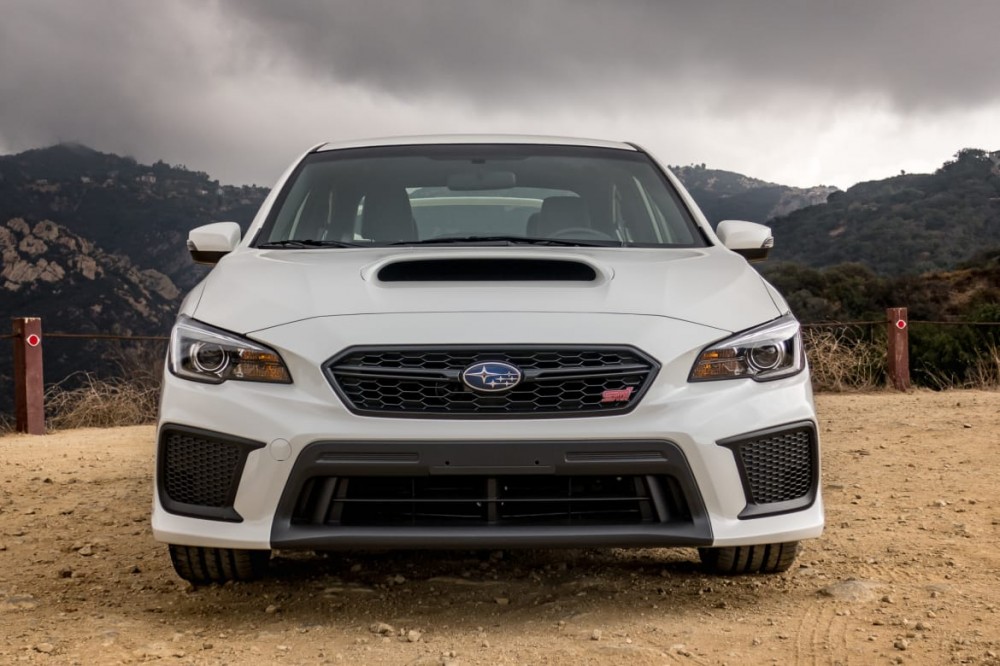
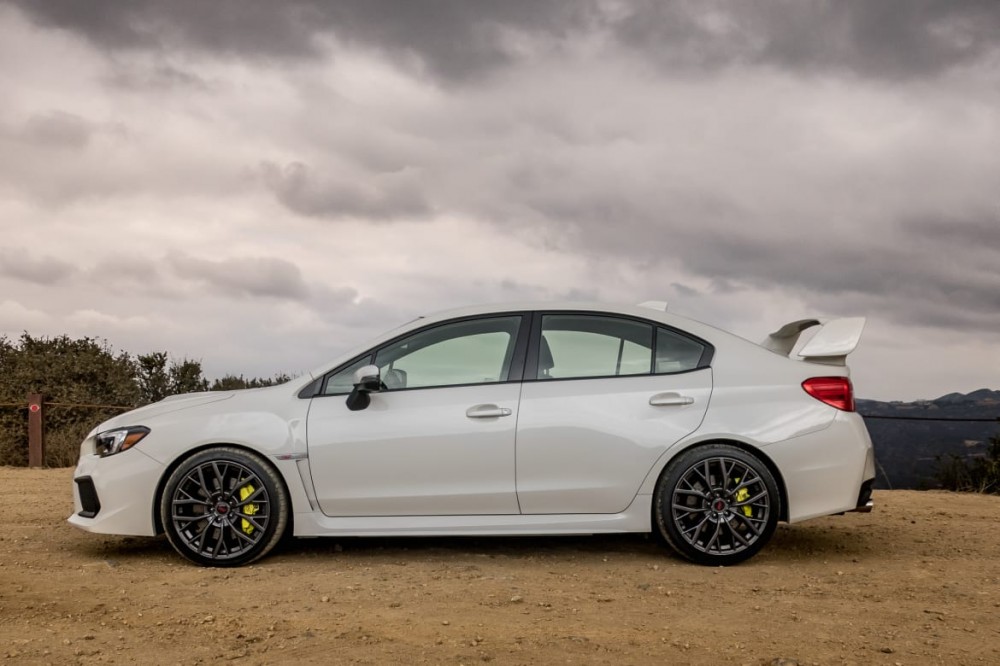
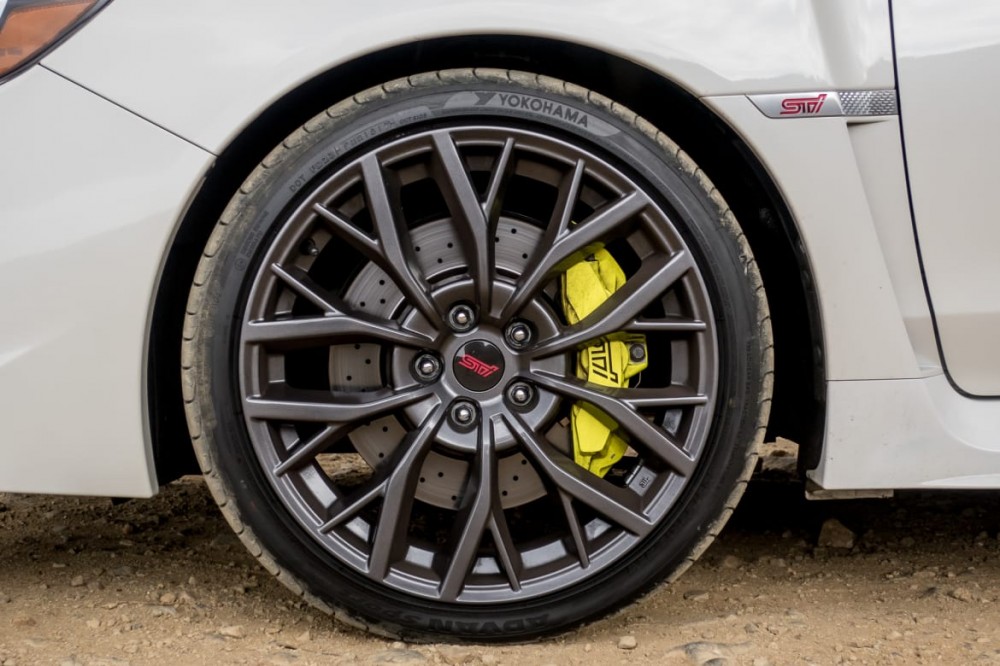
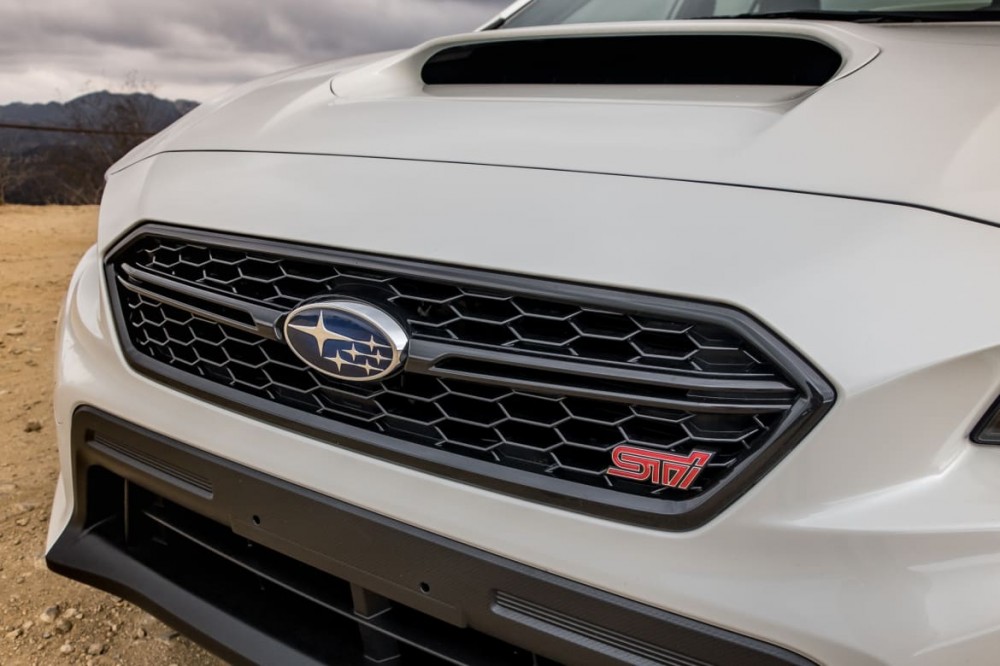
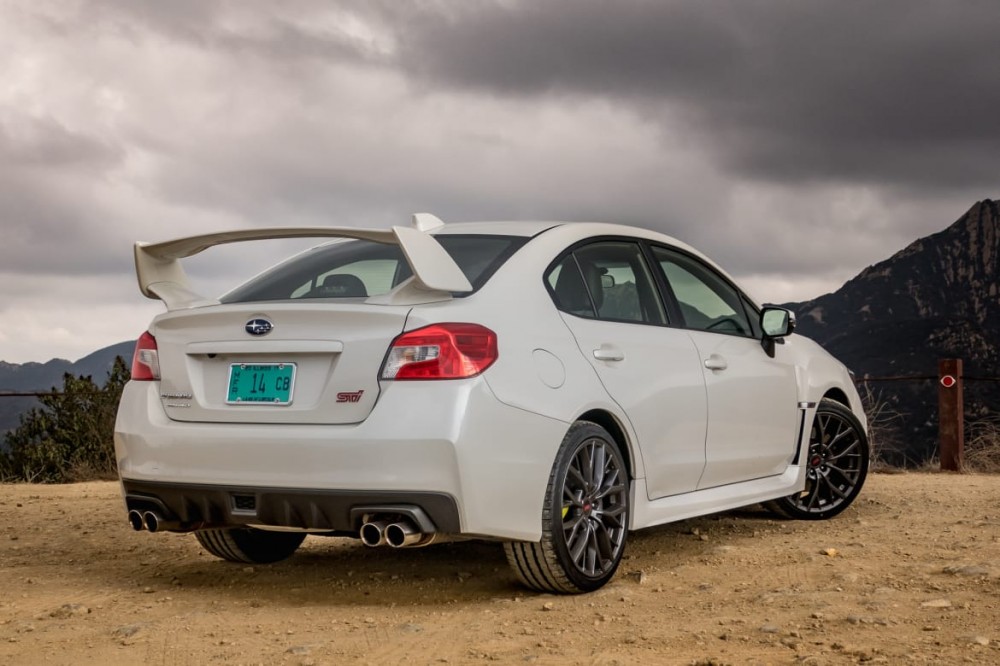
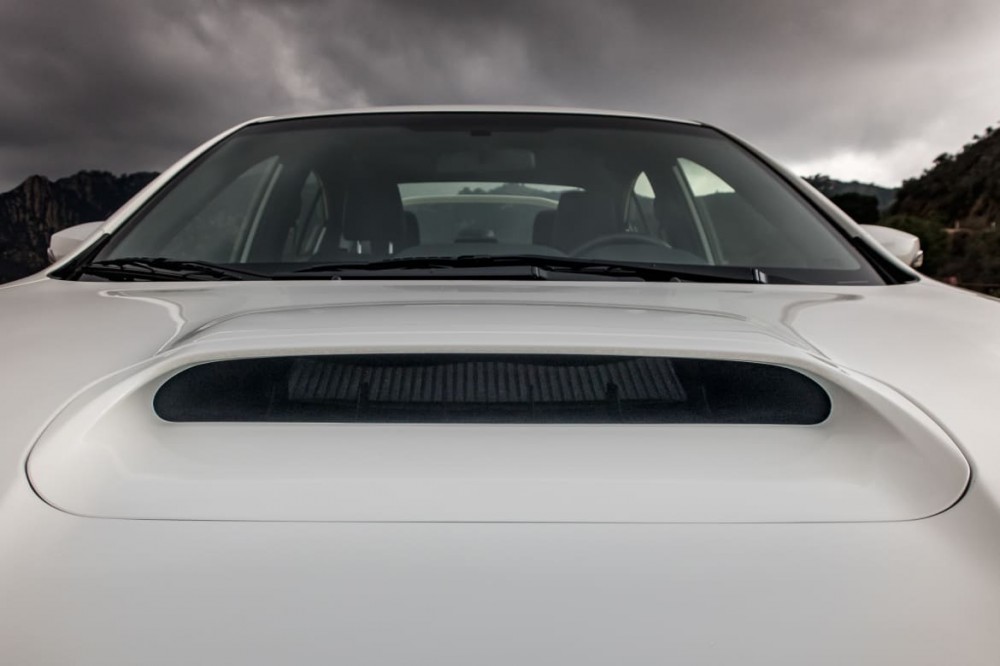
There is a new front grille and 19-inch alloy wheels to enhance styling, as well as updated LED headlights that are steering-responsive (they pan left and right as you steer). The styling changes are hard to pick out; you'd have to line up the 2018 STI with last year's side by side to really tell them apart. Inside, there are updated cabin materials and the option of a new pair of Recaro performance front seats. Compare the 2018 WRX STI with last year's model.
How It Drives
The STI's beating heart is a 305-horsepower, turbocharged 2.5-liter four-cylinder boxer engine that makes 295 pounds-feet of torque. There is only one transmission, a six-speed manual. A symmetrical all-wheel-drive system is standard, and it features an electronic limited-slip center differential, helical gear-type limited-slip differential up front and a Torsen torque-sensing limited-slip differential in the rear.
There is also a good amount of driver customizability, with three different drive modes (Intelligent, Sport and Sport Sharp) and six manual differential lock control settings to change how power is distributed between the front and rear axles.
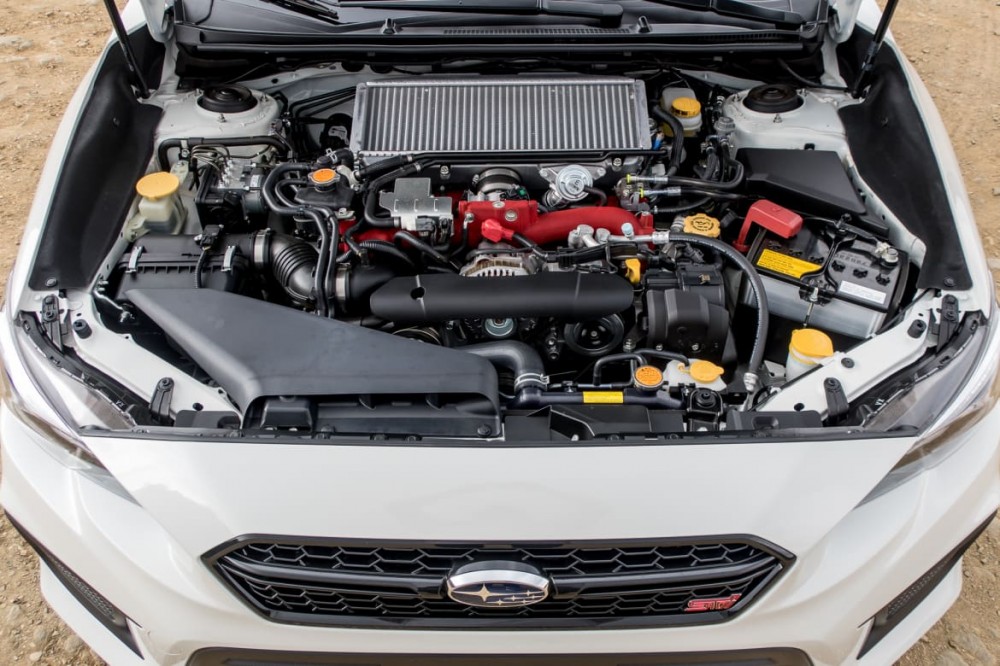
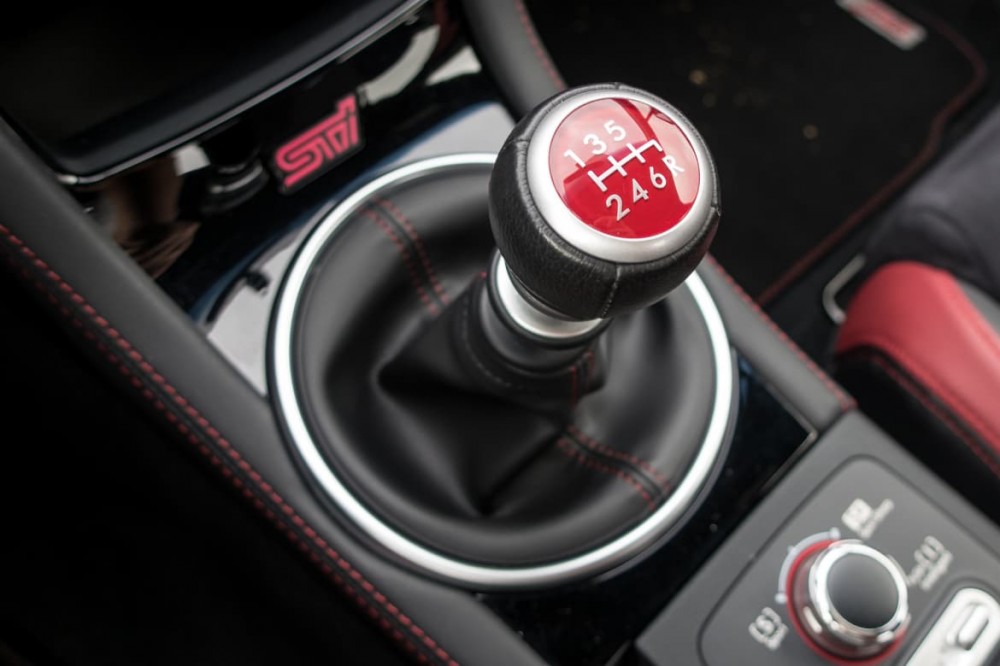
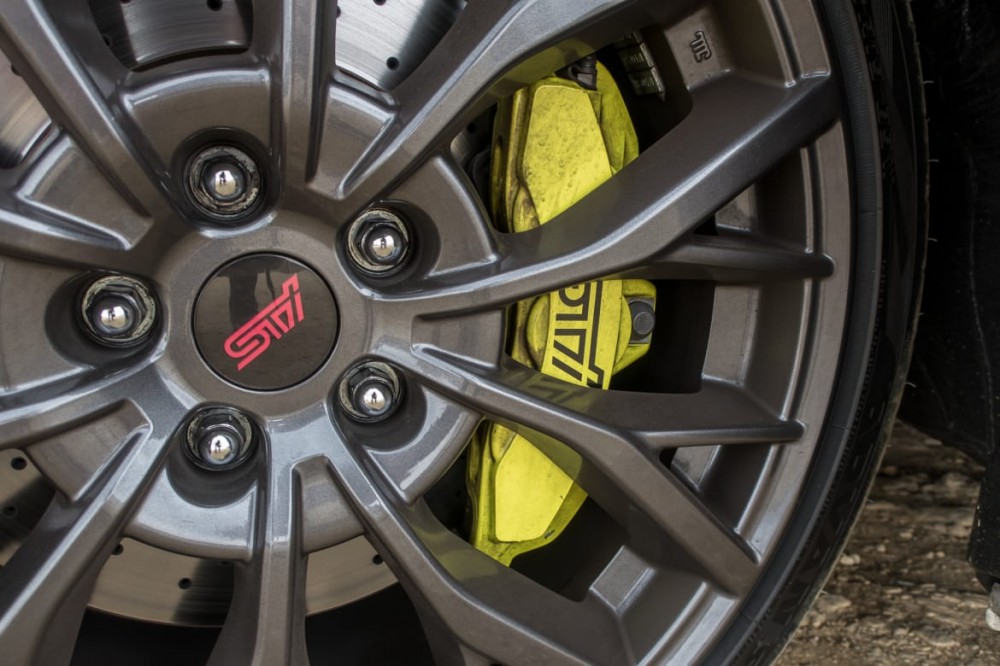
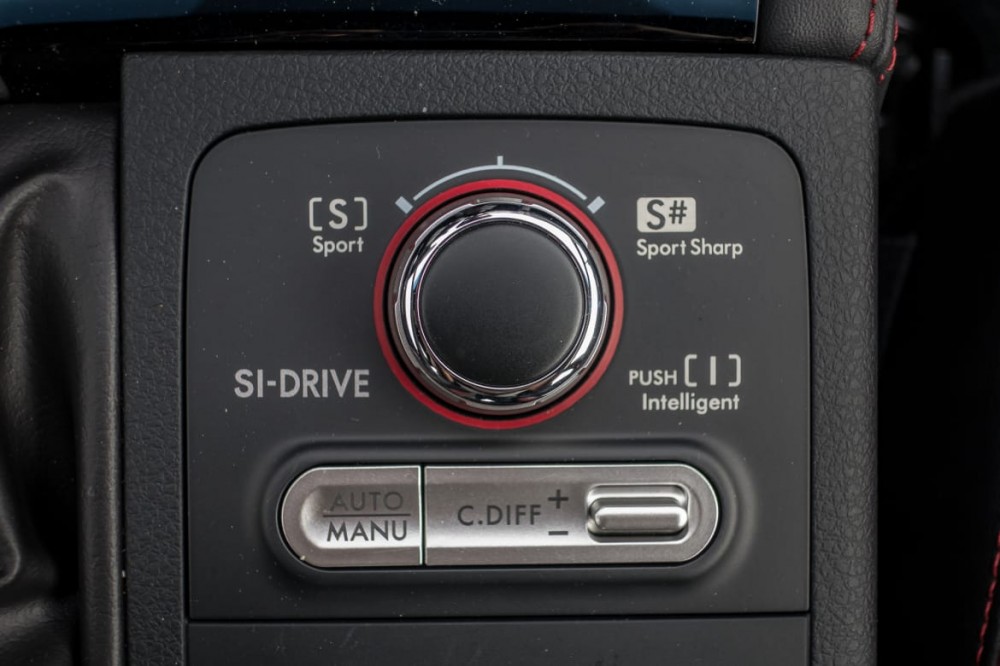
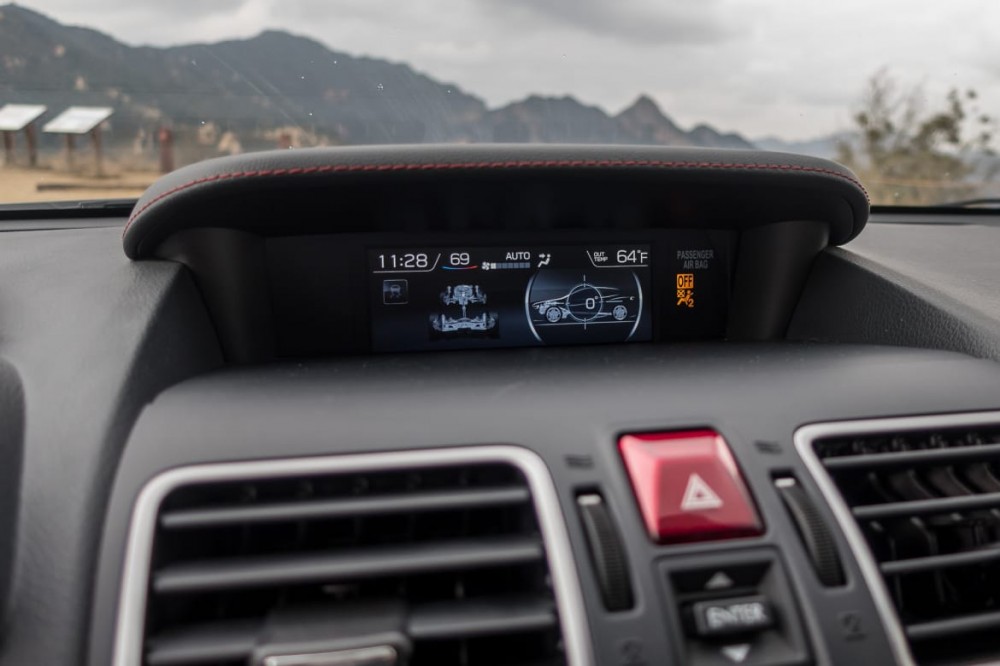
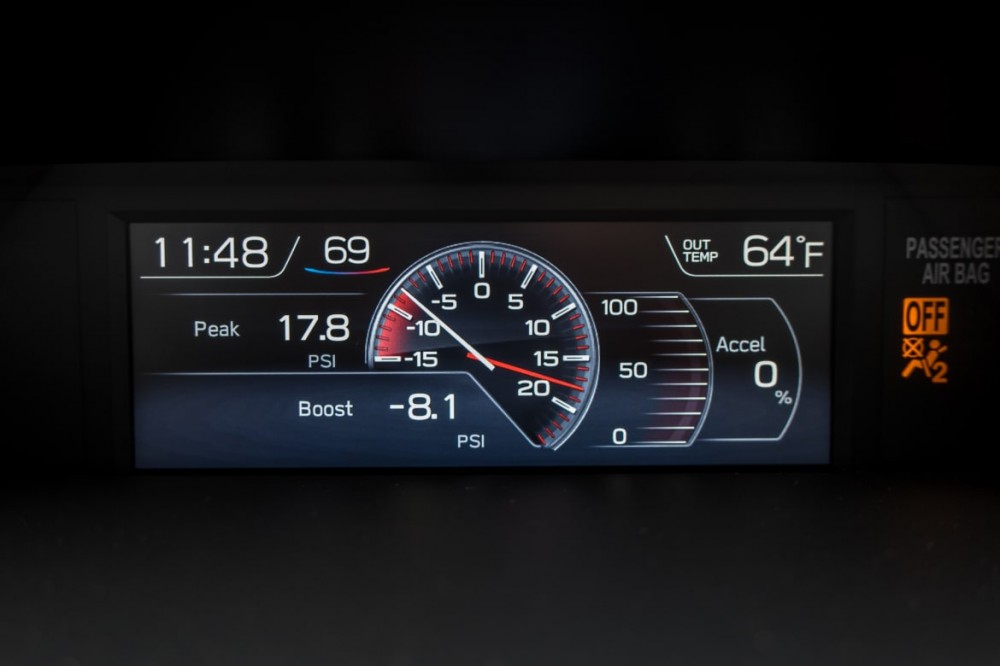
The three different drive modes change up throttle response quite drastically. At low engine speeds, the STI is quite docile — maximum horsepower isn't until 6,000 rpm, and peak torque doesn't come until 4,000 rpm. The Intelligent setting lets you sit in the lower rpm, which makes the car easier to manage in traffic or slower situations. But flip into the other two settings and the engine moves up in the rev range aggressively, building up power in a rush.
While I liked the throttle response, it also highlighted my biggest problem with the WRX STI: its clutch and shifter. I've always had problems with Subaru clutches, which are heavy, feel inconsistent on the catch and are hard to drive smoothly. I can usually figure out a clutch within a few days with a car, but after a week with the STI, I was still a little flummoxed (as were my passengers). The shifter action feels similarly sloppy, especially compared with the tightness of the Focus RS and Civic Type R.
However, if you push the STI, it remains a rewarding experience. The suspension tuning is a bit stiff for everyday use, but it pays off when you're moving quicker. The front-to-rear balance is quite good, and if you're driving aggressively, the lack of gearbox smoothness is less noticeable. The STI's best trait is how it puts down power: The all-wheel drive works hard. I was also a fan of the STI's power steering; instead of an electric system, it has a good old-fashioned hydraulic assist that offers tons of feedback. It's a bit twitchy on center, which could be because those electric systems I've gotten accustomed to smooth out some of that feedback, but I'll trade that for the system's upsides.
The STI's best trait is how it puts down power: The all-wheel drive works hard.
The STI's fuel-economy figures are not good at an EPA-estimated 17/22/19 mpg city/highway/combined; the Civic Type R is rated 25 mpg combined, and the Golf R is rated 24 mpg combined with a manual transmission and 25 mpg combined with an automatic. All of these cars require premium gas.
Down-Market Interior
Though 2018 brought updated cabin materials, they're still not up to snuff for a car with a price tag that pushes $40,000. It felt on par with the interior of the Focus RS I tested in 2017, but it was definitely behind the Civic Type R and Golf R in terms of materials and design. The backseat is especially sparse, with no power ports or vents for those passengers.
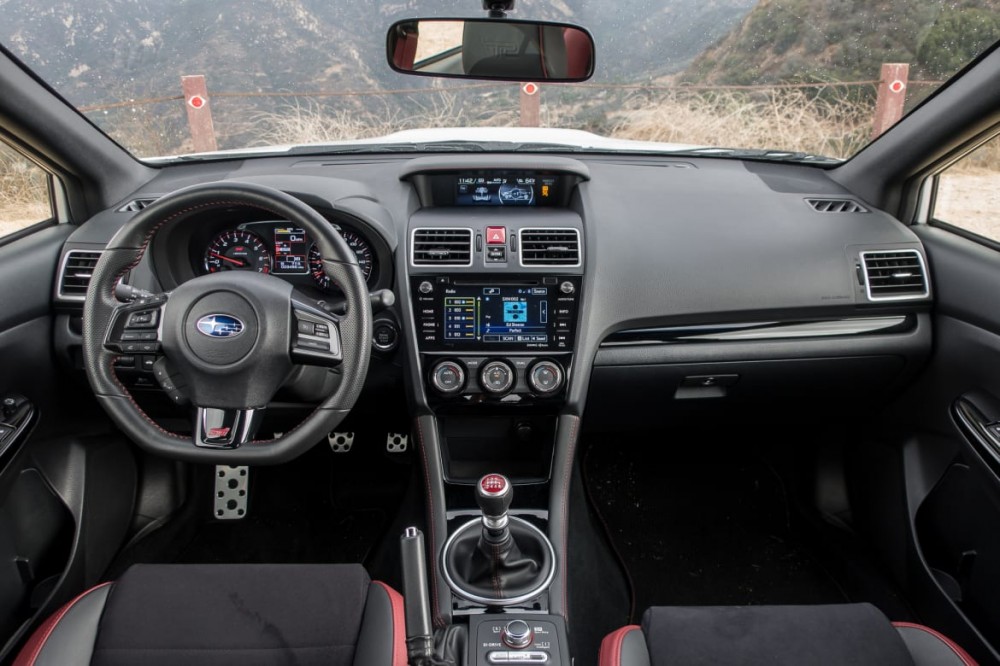
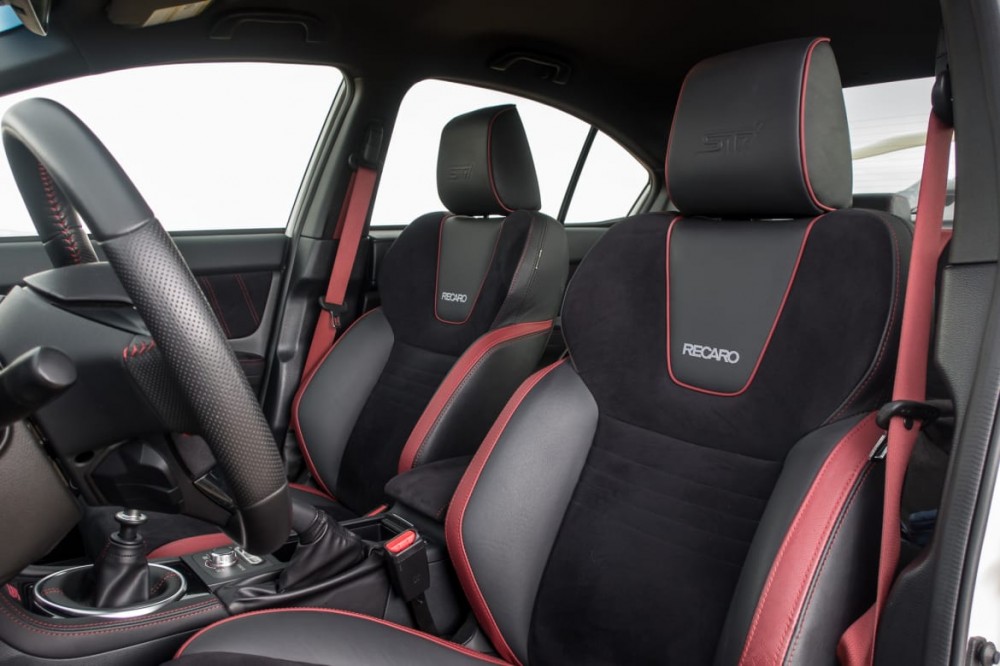
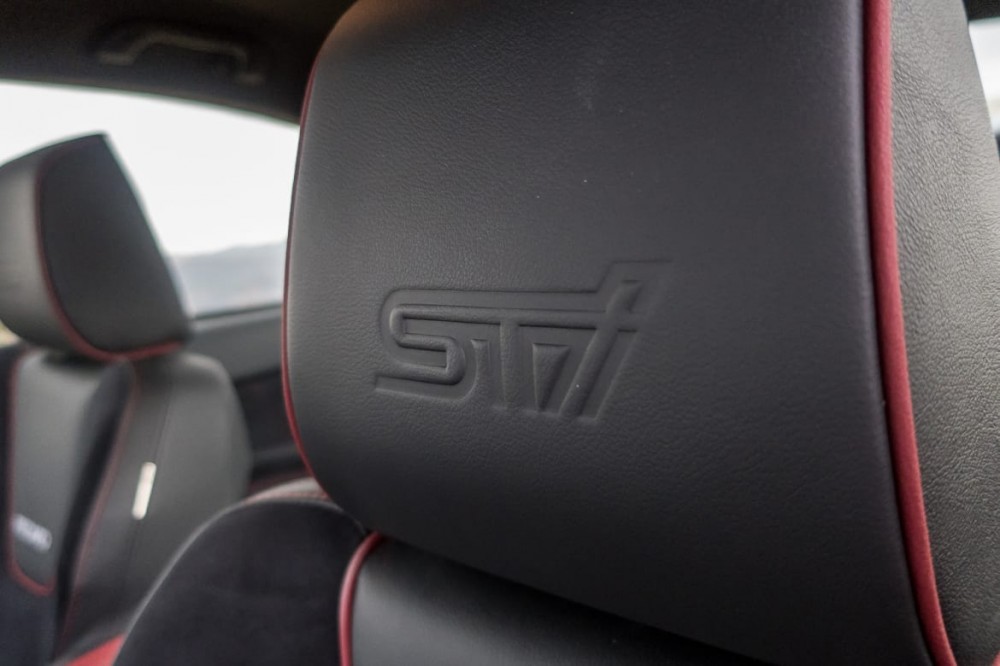
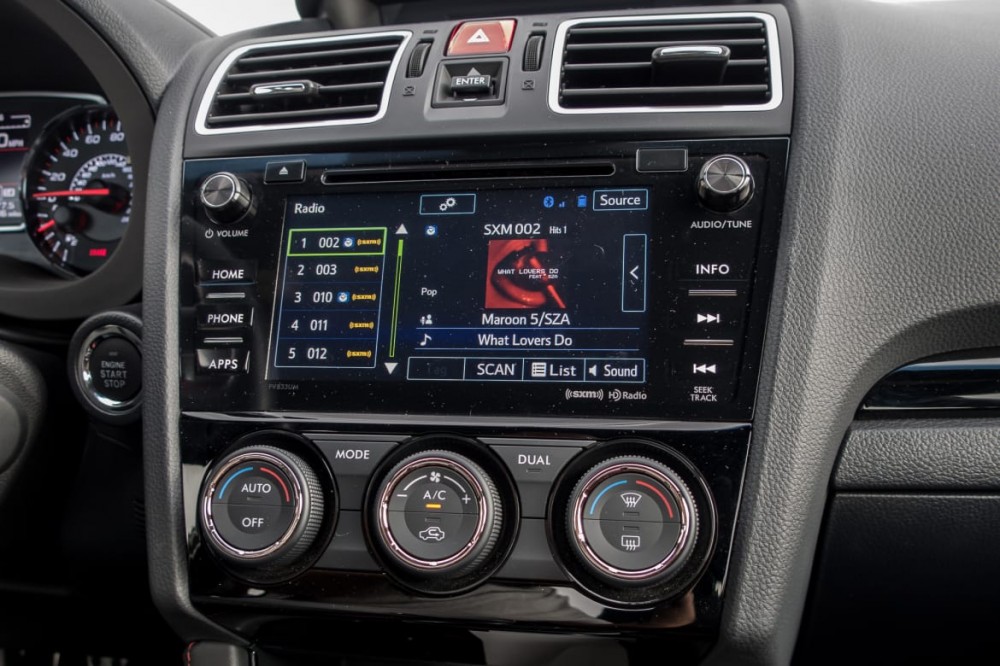
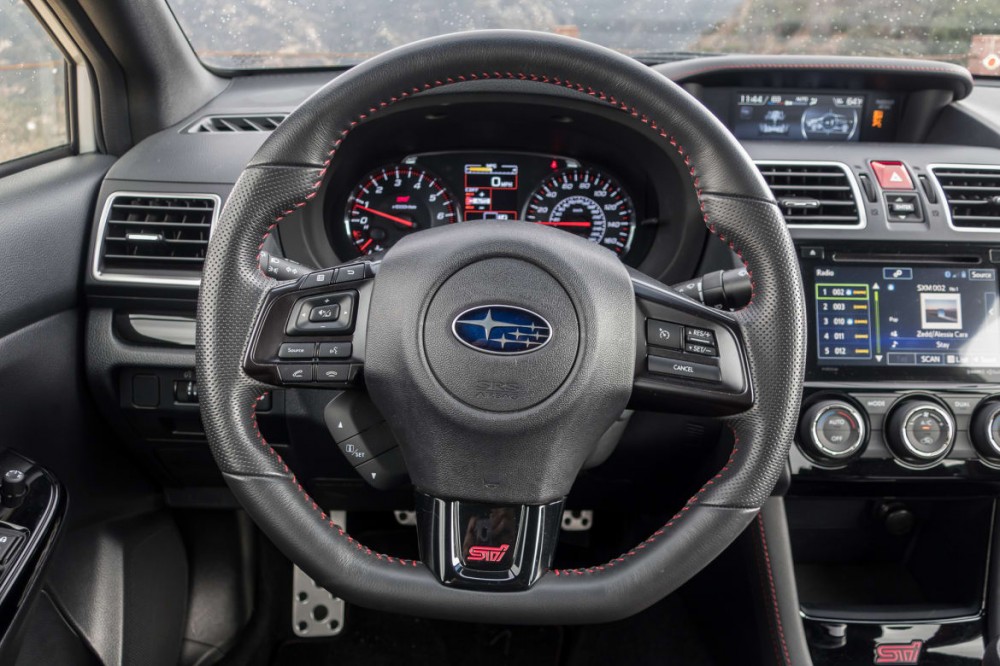
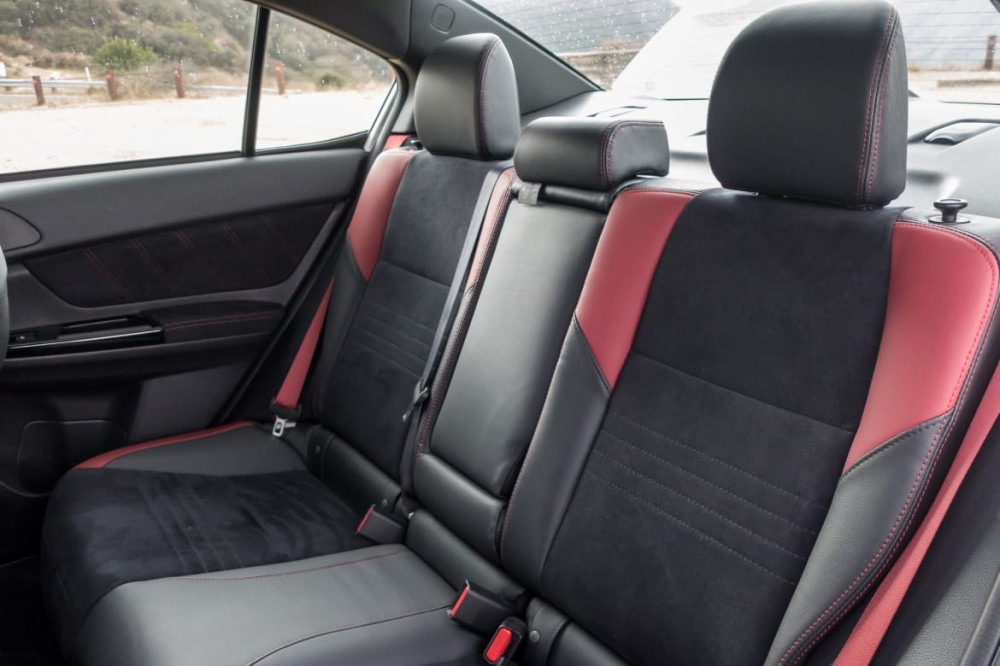
The optional Recaro seats are a nice touch: They provide good bolstering and though I sometimes don't fit well into sport seats (due to my personal wideness), I had no such issue with these. They come as part of a $2,500 option package that includes push-button start and keyless access. The standard 7-inch touchscreen that controls the multimedia system has touch-sensitive controls on either side of the screen, but the panel has small indentations that makes the individual buttons easier to locate. Unfortunately, Android Auto and Apple CarPlay are not included at this time (though they are included on other 2018 Subaru models).
The Recaro seats are standard if you jump up to the Limited trim level, which does spruce up the cabin a bit with leather upholstery, a navigation system, upgraded speakers and a power moonroof. But the Limited represents a $4,800 jump over what's already a pretty expensive car. Which brings me to my next point …
It Costs How Much?
The STI starts at $36,955 (all prices include destination charges), but my test vehicle stickered at $39,455 (thanks to the aforementioned seats), which made my eyes pop. The Limited model at $41,755 isn't much easier to stomach.
That's a lot of scratch for a car that doesn't have an upmarket interior and is lacking in safety features. Limited models do add blind sport warning, but you won't find forward collision warning, automatic emergency braking, lane keep assist or adaptive cruise control here. There are various reasons for this — for example, the STI's hydraulic steering system means no lane keep assist (the feature requires electric power steering). But Subaru does offer its EyeSight safety system on other vehicles with a manual transmission (including the 2018 WRX), so its absence here is troubling.
Conclusion
Make no mistake about it, the 2018 WRX STI is a well-sorted performance car with some very cool technology both underneath and inside of it that makes it a fun, spirited drive. But I can't come up with a compelling reason to buy one over its competitors.
If you want to have the most fun, grab a Civic Type R with its brash styling and exceptional grip. If you require all-wheel drive and want the most performance, then the Focus RS is your cup of tea; it also has a weak interior but a more powerful engine and better gearbox than the Subaru. If you want something that has much more everyday livability, cargo room and safety technology while still being fun to drive, go with the Golf R.
And although the Focus RS is priced similarly to the STI I tested, both the Civic Type R ($34,990) and the Golf R ($36,475) offer more for less. The Golf R even comes standard with forward automatic emergency braking, leather upholstery and navigation.
I liked the STI, but I like the other three a lot more.
Cars.com's Editorial department is your source for automotive news and reviews. In line with Cars.com's long-standing ethics policy, editors and reviewers don't accept gifts or free trips from automakers. The Editorial department is independent of Cars.com's advertising, sales and sponsored content departments.








